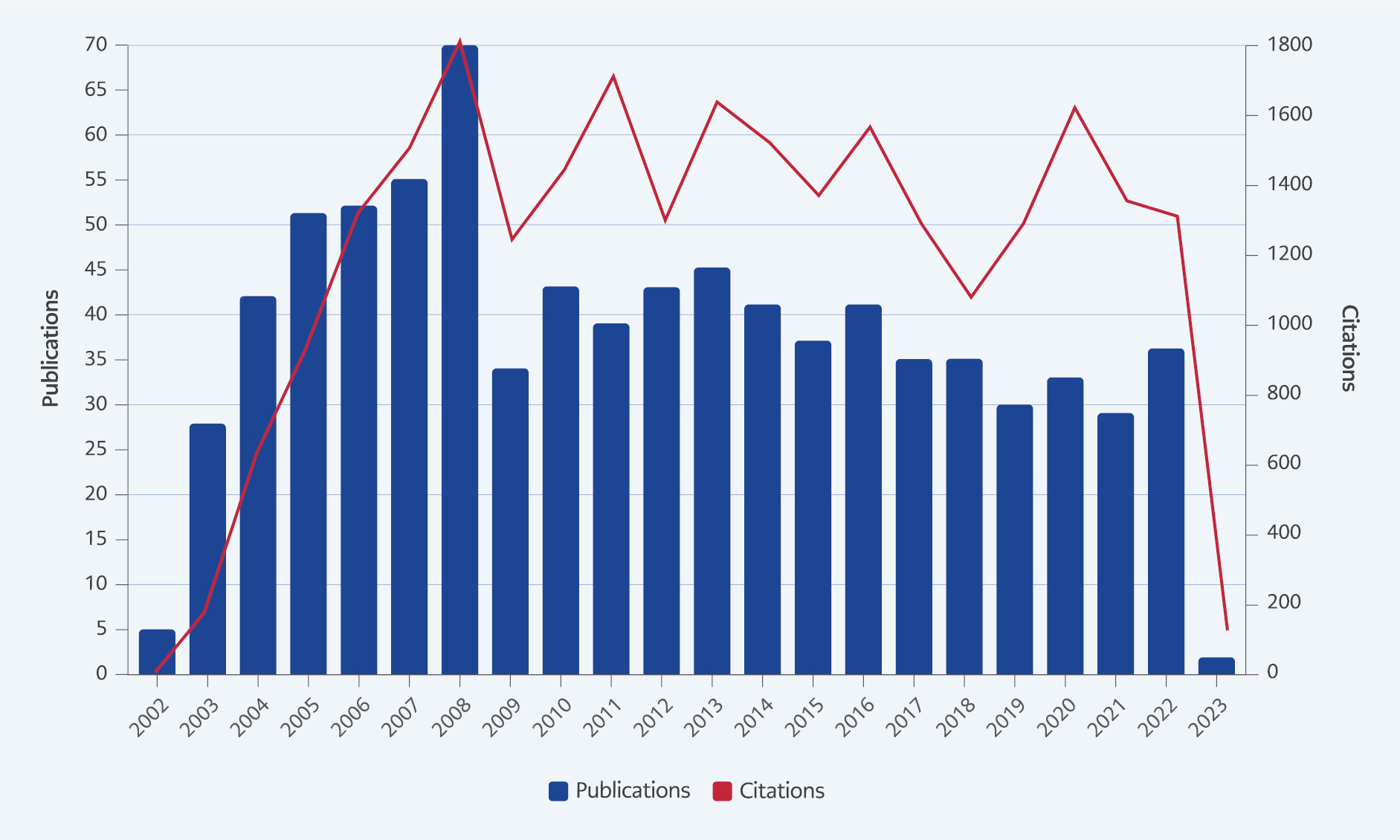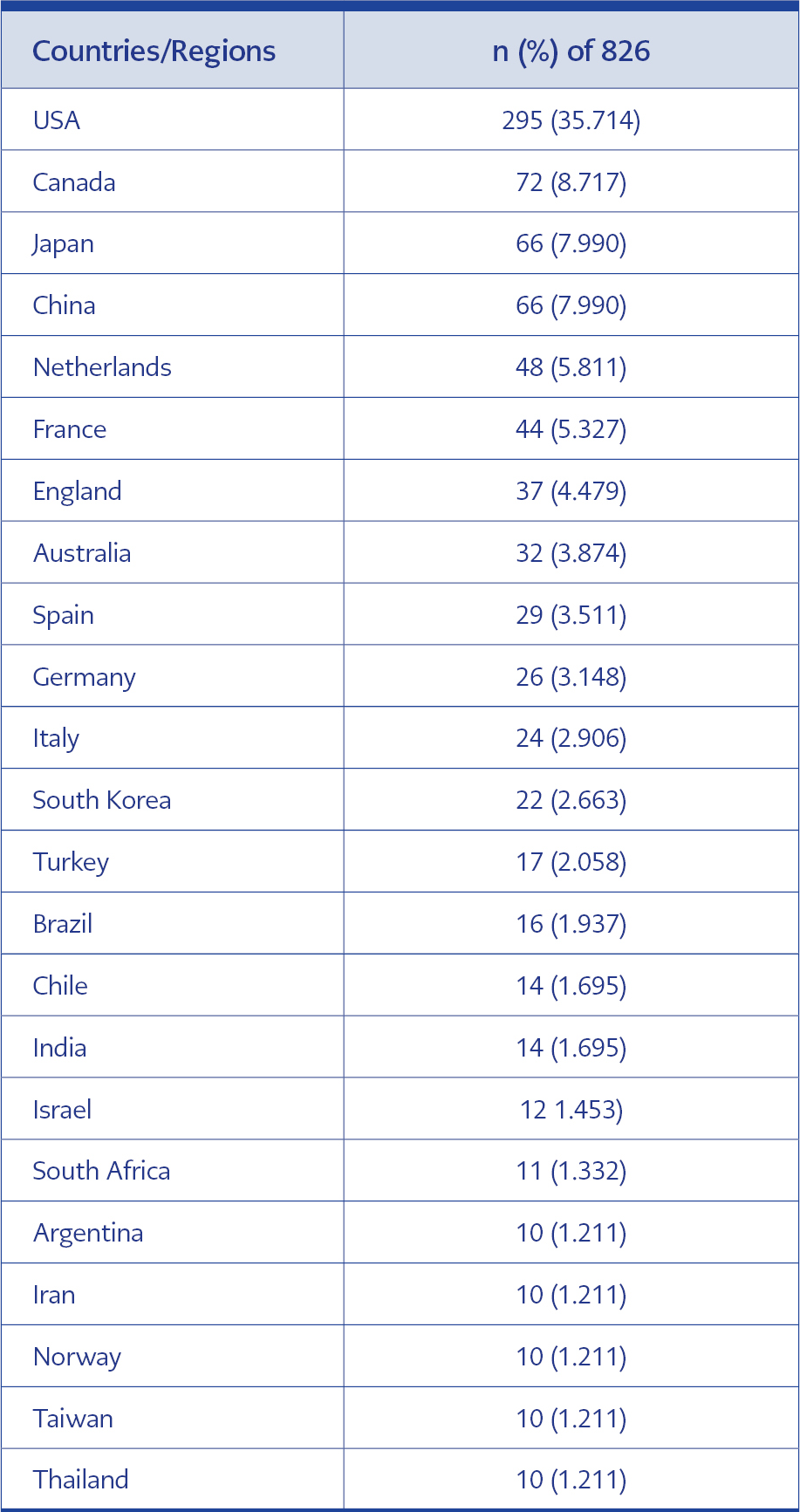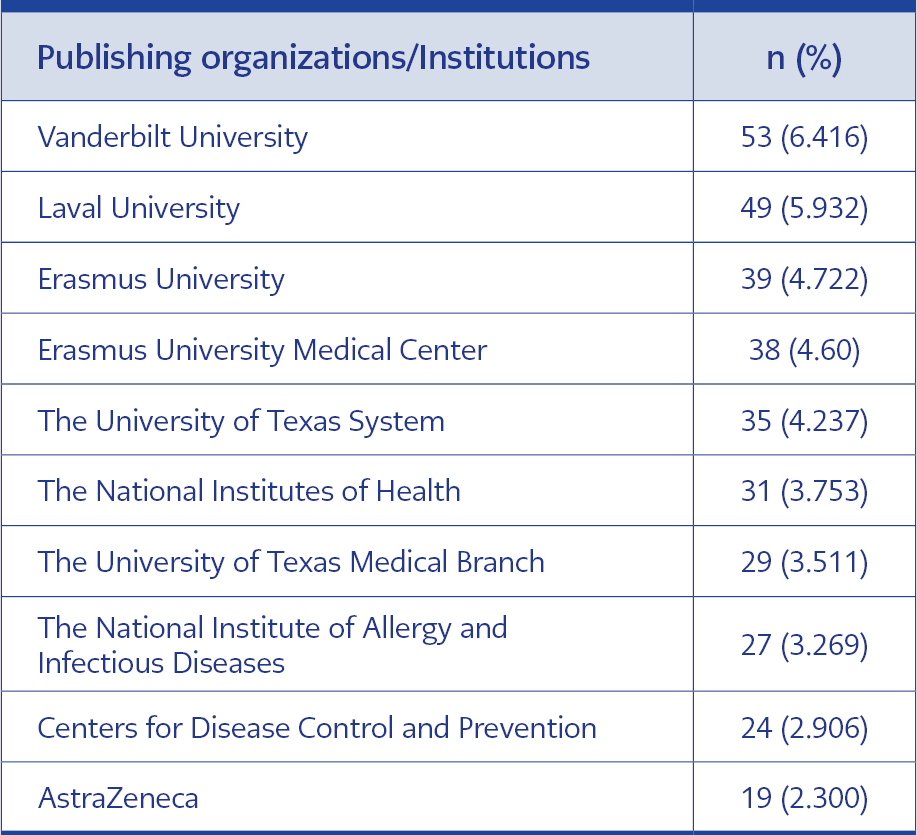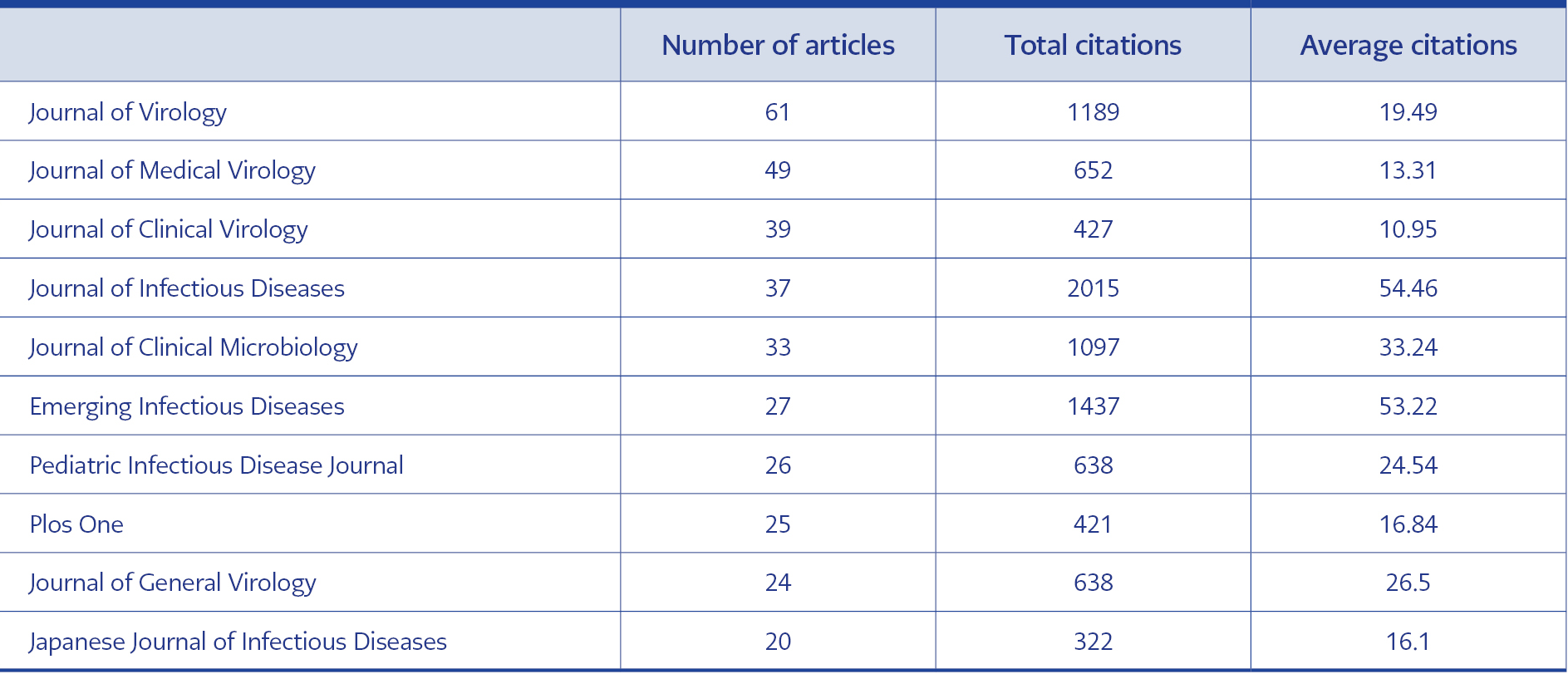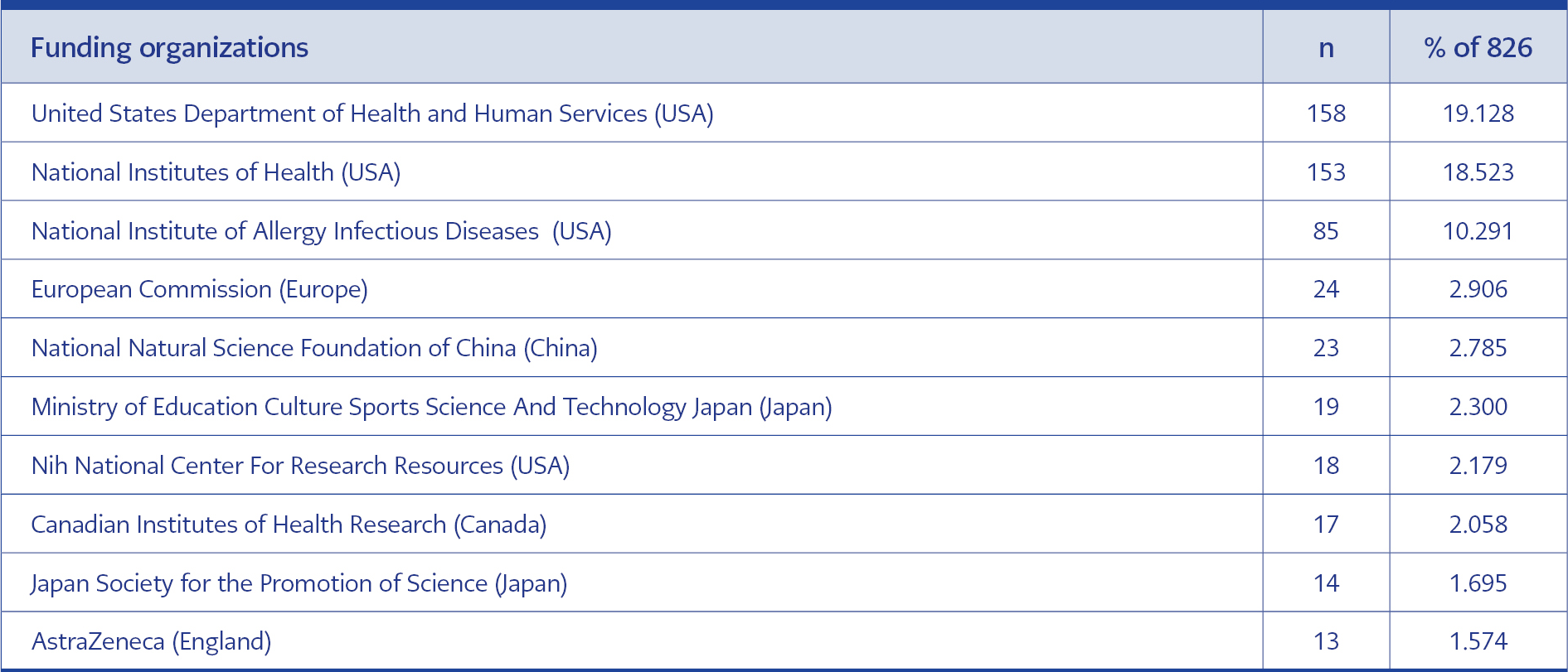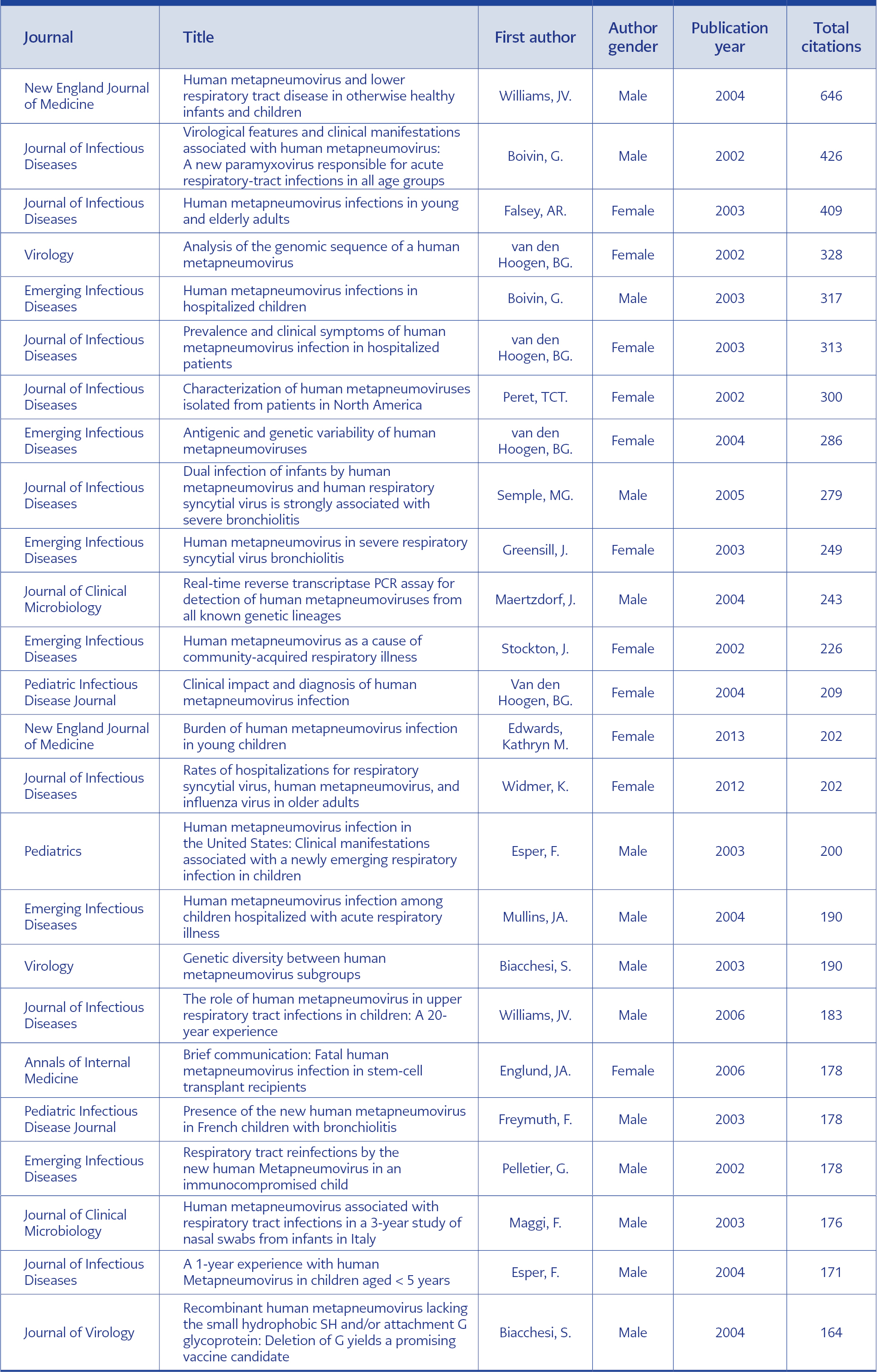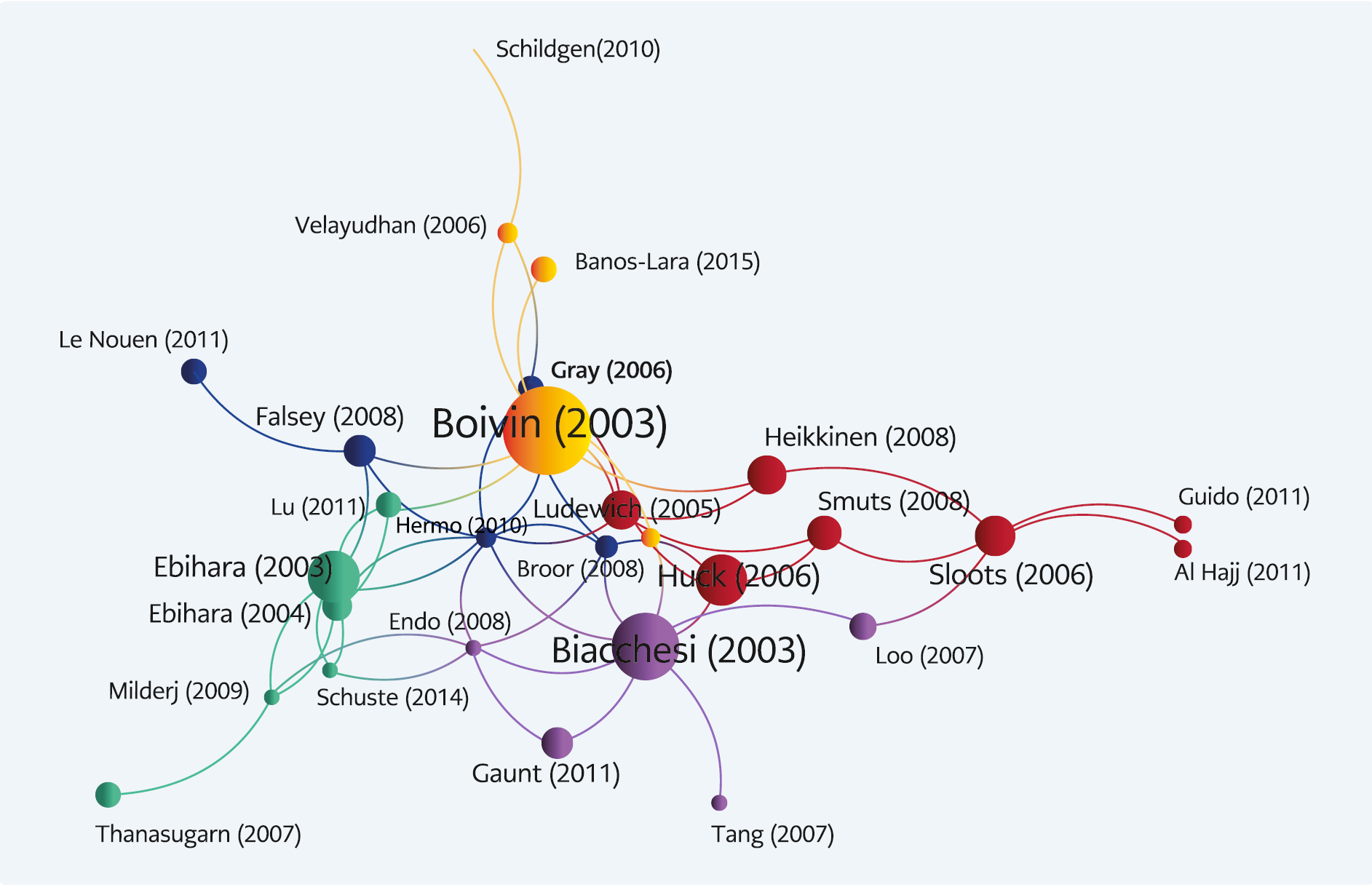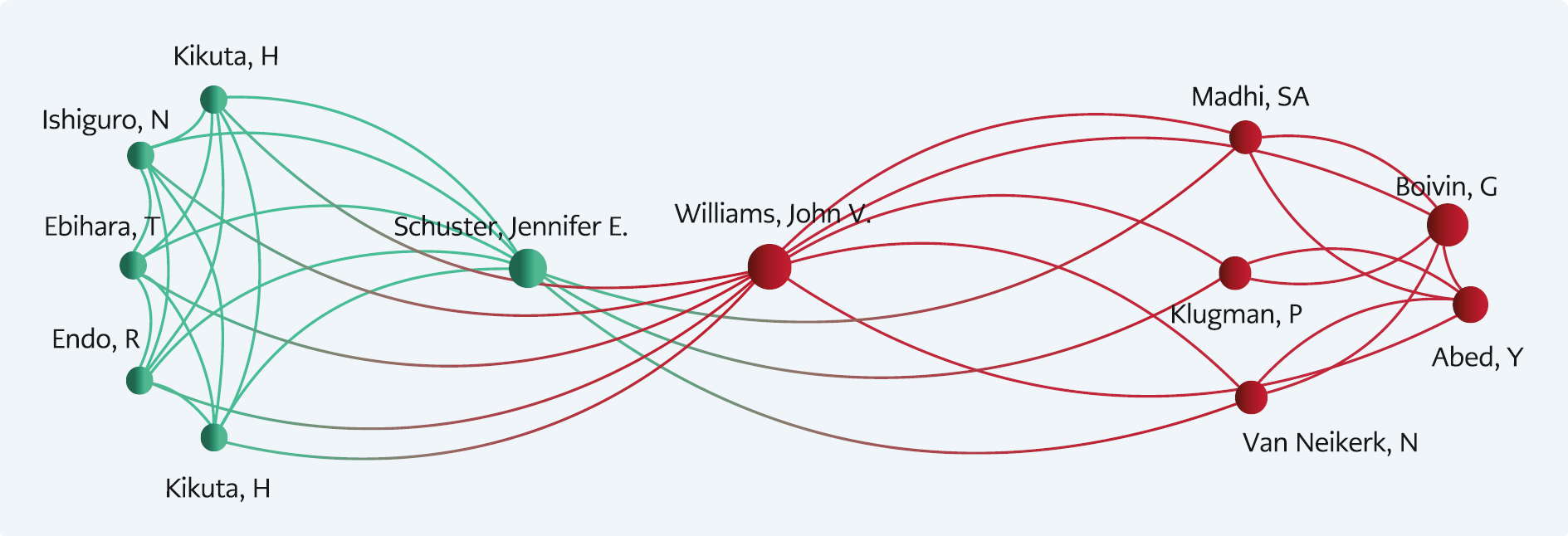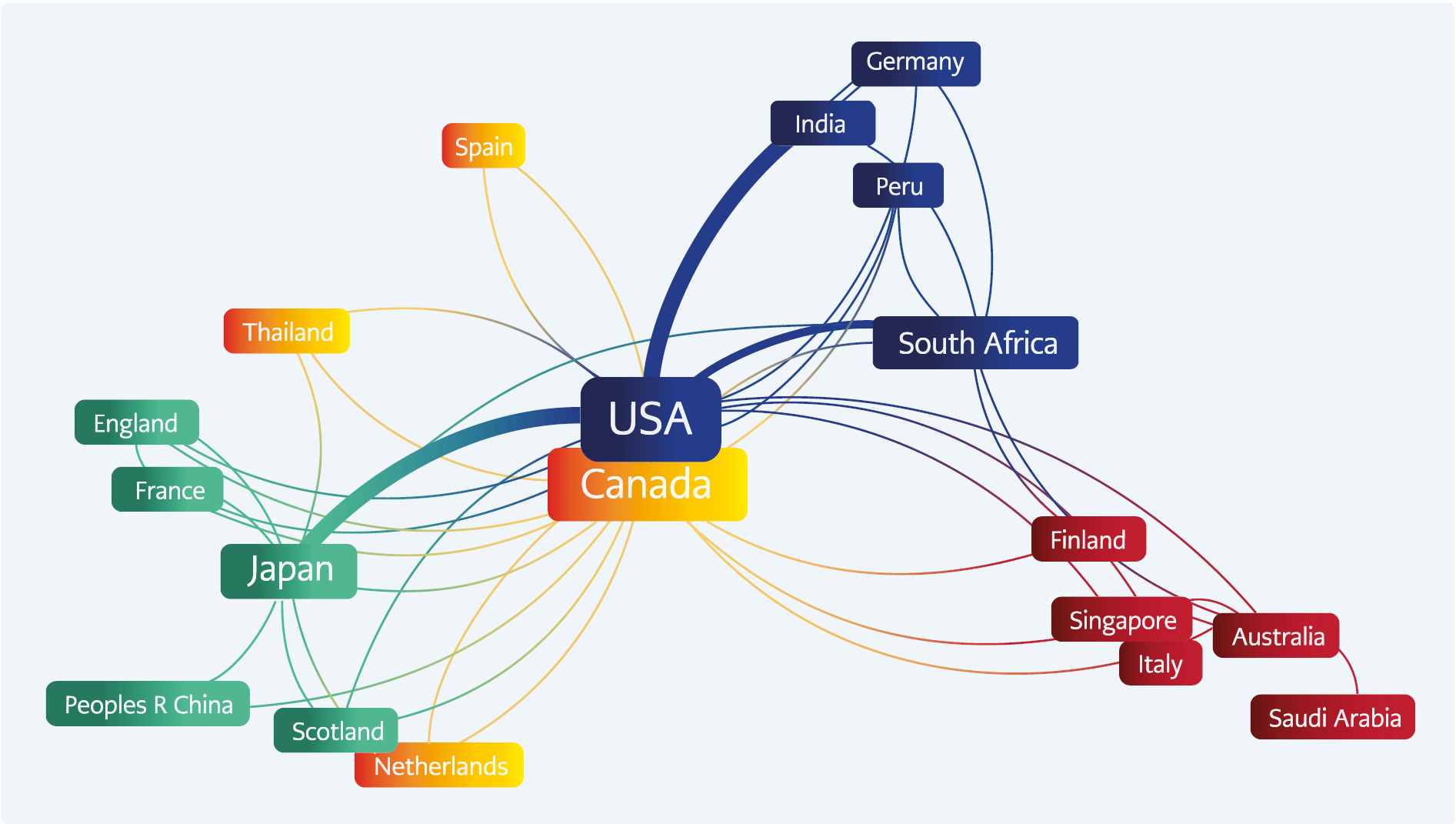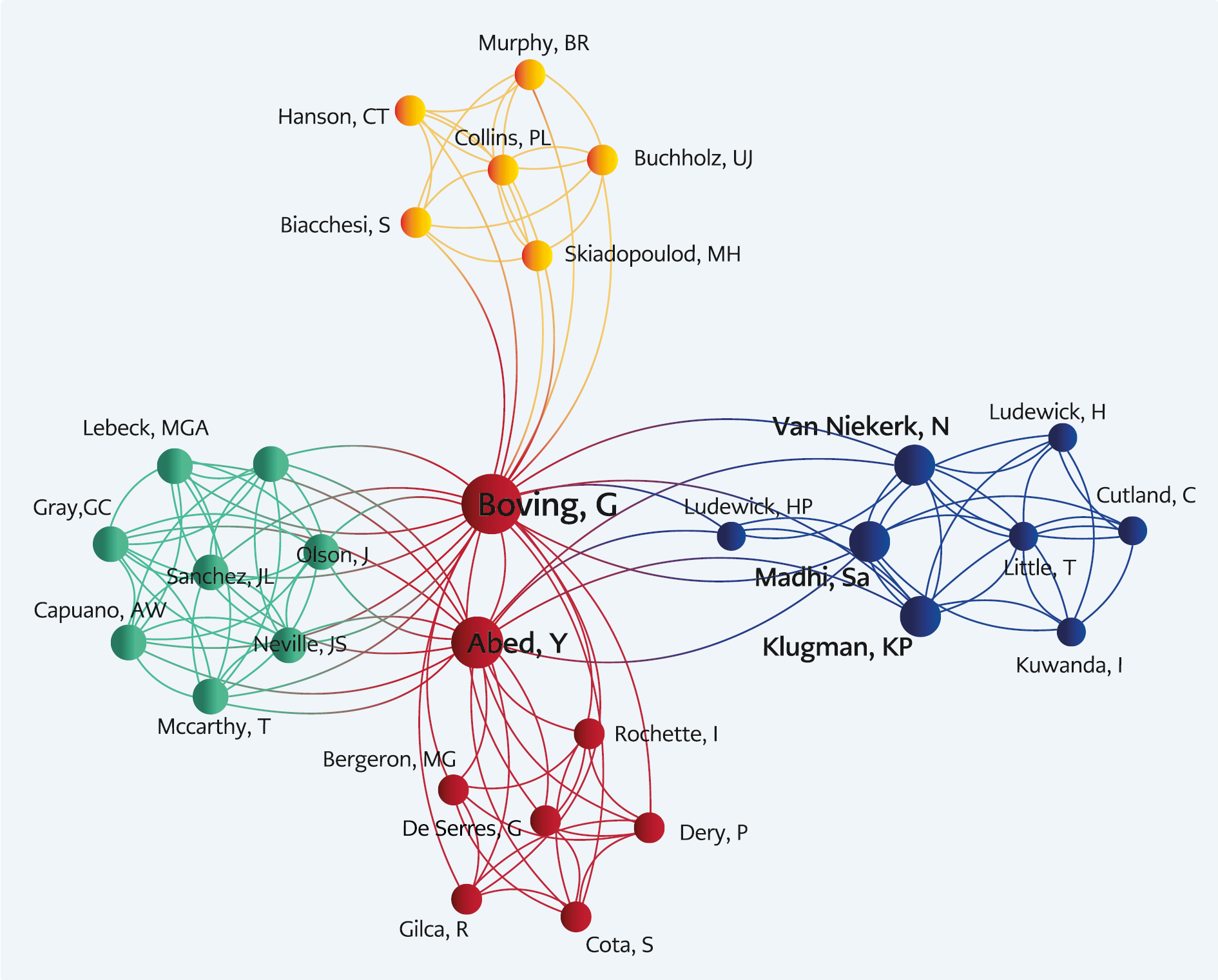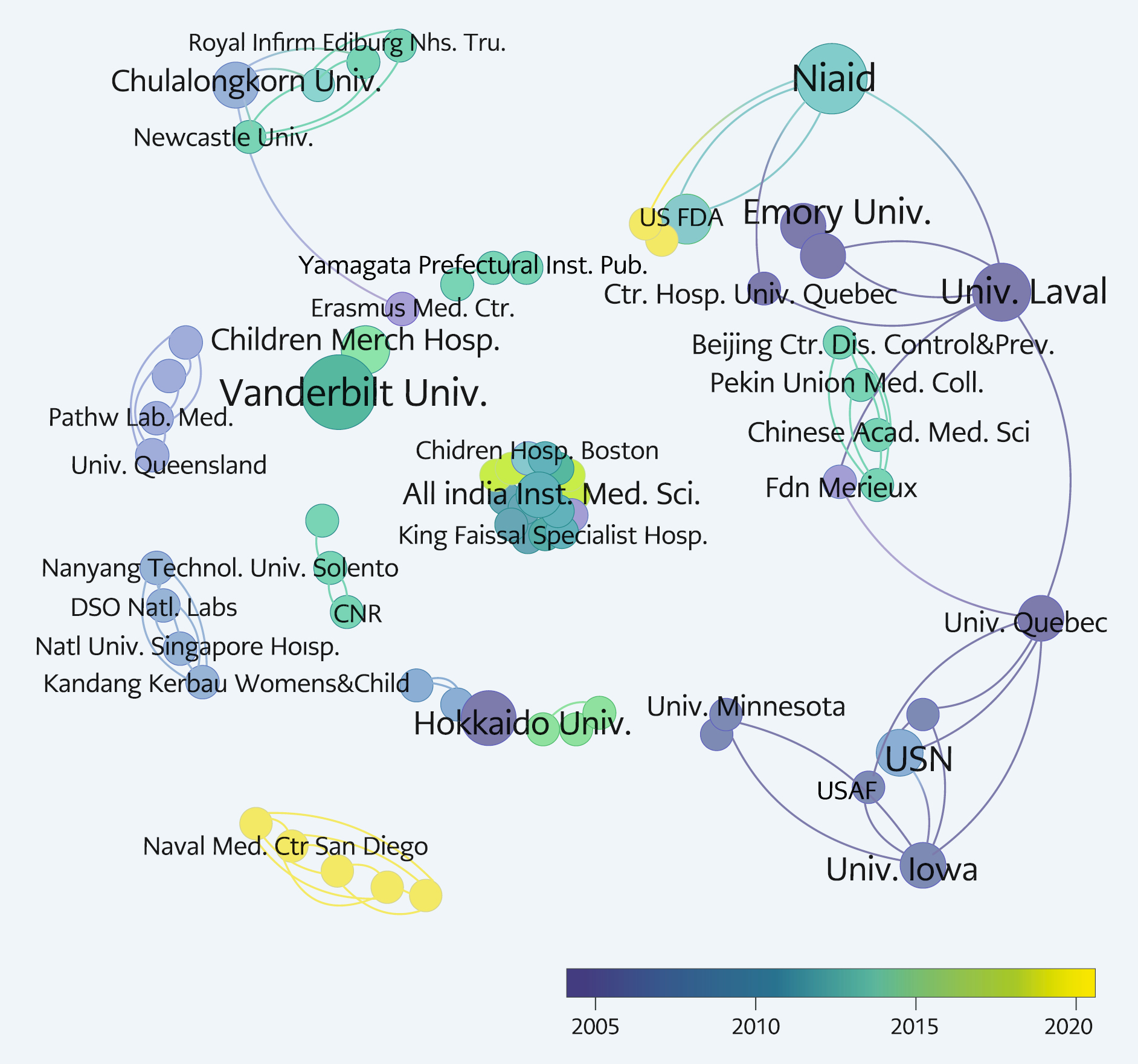Introduction
Human metapneumovirus (hMPV) is an enveloped, single-stranded ribonucleic acid (RNA) virus in the genus Metapneumovirus (1). In 2016, the Pneumoviridae family replaced Paramyxoviridae as a new classification for this virus (2).
It was first identified as a lower respiratory tract infection etiological agent in the Netherlands in 2001 (3, 4), and in recent years it has been detected all over the world (2). According to studies, hMPV has been present in human populations for more than 50 years (5). Transmission to humans occurs through direct or close contact with the infected person’s secretions (4). Signs and symptoms of hMPV infection have been reported in primates other than humans, such as macaque monkeys (4). It has been reported that hMPV causes infection mostly in late winter and spring, but the seasonal distribution is not known for certain and can cause co-infection with other respiratory viruses (3). The signs and symptoms are frequently severe and resemble infections with respiratory syncytial viruses (5).
It is a common cause of respiratory tract infections, mainly in childhood, but immunocompromised patients and adults can also become infected with this virus (4). Seniors who have hMPV may acquire severe respiratory conditions (5). Previous studies conducted in different countries reported that the virus is especially active in pediatric patients and is detected in 5-20% of lower respiratory tract infections (2). Seroprevalence studies demonstrated that humans become infected for the first time before the age of five and continue to become infected for the rest of their lives (6). Human metapneumovirus is divided into two main, separate genetic groups, A and B, which exhibit antigenic differences but share the same clinical signs of infection (5) and also further divided into subclasses that include A1, A2, and B1, B2 with seasonal variation (2).
Direct antigen tests, cell cultures, molecular methods, and serologic methods are currently used in the diagnosis of hMPV infection (3). The current situation regarding the treatment of hMPV infections is supportive. Ribavirin, monoclonal antibodies, inhibitory peptides, and small interfering ribonucleic acids have been used in human/animal in vivo models, and several vaccine studies are being conducted to control hMPV infection in non-human primate models (7-10).
Numerous bibliometric analyses have been conducted on respiratory pathogenic viruses (11-14). “Bibliometric study” is a methodological technique from the library sciences based on reviewing scientific literature about specific topics by using statistical analysis to estimate the impact and productivity of authors, articles, papers, and other journals, including citing numbers. This study aimed to provide a detailed analysis of scientific research articles on hMPV. We explored annual trends of publications and core journals showing current status and future research trends by representing highly productive authors, institutions, countries, or regions and co-cited references. Our bibliometric study provides a systematic and comprehensive analysis of the scientific research on hMPV, which may inform future research directions and facilitate the development of effective prevention and treatment strategies for this virus.
Materials and Methods
We conducted a bibliometric study to analyze scientific research articles related to hMPV+. We retrieved scientific research articles on hMPV from the Web of Science (WoS) electronic bibliometric database. We selected this bibliographic database because it covers comprehensive and relevant scientific literature from various disciplines.
First, we typed human metapneumovirus OR hMPV OR HMPV in the title section of the search engine and retrieved all relevant literature published until March 31, 2023. We performed a literature search in one day (April 1, 2023), as the database was updated every day.
To accomplish this, we searched for all types of documents containing original research data, such as articles, letters, reviews, and conference proceedings. The data extracted in the bibliometric analysis were the title, author name, year of publication, journal name, publication type, country of origin for each article, number of articles published per country, and citation count.
The search was not restricted to a specific language, and we examined the number of article citations and the dominant countries according to the year period. The data are presented as percentages and decimals in the tables and graphs.
We used descriptive statistics to calculate the total number of articles, average citation count per article, and percentage of articles published per country. We also used a network analysis tool (VOSviewer software) to visualize the co-authorship and co-citation patterns among the institutions and countries involved in the research on hMPV and to broadcast network links between countries/institutions and the most preferred keywords.
Results
In our initial search using the selected keywords, we obtained 1120 results, of which 826 were articles. We focused our analysis on articles and excluded other document types. According to the WoS database, the first publication on hMPV was in 2002. 2008 was the year that the most articles on hMPV were published, with 70 articles (Figure 1), and the year 2008 also had the highest number of citations (>1800) (Figure 1). The majority of research on hMPV was published between 2002-2012. Figure 1 shows the number of publications on hMPV and their citations from 2002 to March 2023; the graph was obtained from the WoS database. Most hMPV-related articles (n=775; 93.826%) were published in journals indexed in the Science Citation Index Expanded of the WoS Core Collection and English (n=800; 96.852%), Spanish (0.969%), Turkish (0.969%), French (0.726%), and Korean (0.484%) were the preferred publishing languages.
Authors from 69 countries and 1083 organizations/institutions have contributed to the literature on hMPV. The United States had the largest number of publications on hMPV (n=295, 35.714%). According to our findings, Canada (n=72), Japan (n=66), China (n=66), the Netherlands (n=48), France (n=44), England (n=37), Australia (n=32), Spain (n=29), and Germany (n=26) were also listed among the top publishing countries for hMPV (Table 1).
Vanderbilt University (the United States), Laval University (Canada), Erasmus University Rotterdam (the Netherlands), and Erasmus University Medical Center (the Netherlands) were among the top publishing organizations/institutions on hMPV. In addition, AstraZeneca Pharmaceutical Company was among these organizations (Table 2).
The 826 articles included in our study were published in 235 journals. The Journal of Virology’ published 61 publications on hMPV and ranked first among journals with the highest number of publications on hMPV (Table 3).
The top funding agency was the United States Department of Health and Human Services, which supported 158 articles, followed by the United States National Institutes of Health (153 articles) and the United States National Institute of Allergy Infectious Diseases (85 articles). The leading funding agencies for hMPV research were from the United States, Europe, China, and Japan (Table 4).
The total number of citations for articles was 26,797, with an average of 32.25 citations per article. According to the WoS database results, the highest number of citations for a single article was 316, and the Hirsch (H)-index of 826 articles was 80. A summary of the most cited 25 articles is shown in Table 5. Williams, JV, was the most productive author with 47 articles.
We examined publication trends by dividing the publication years into two 10-year periods. When we compared the first period, 2002-2012, with the second period, 2013-2023, we observed that the number of publications decreased from 462 to 364 in the second period. The citation number was higher in the 2002-2012 period than in the 2013-2023 period (22,483 and 4192, respectively). The United States had the most publications in both periods. However, while Canada ranked second regarding the number of publications in the first period, it dropped to fifth place in the second period, and there was an increase in Chinese publications in the second period (Table 6).
We used the VOSviewer software to visualize the co-authorship and co-citation patterns among the institutions and countries involved in the research on hMPV and obtain network links between countries/institutions and the most preferred keywords. In Figure 2a, we created citation mapping of articles with a minimum of 10 citations. The larger circles indicate a higher total link strength. The top 28 articles are shown in Figure 2. Figure 2b shows author citation mapping. In the figure, the larger the circle size, the greater the document and citation strength of the author. The lines represent citation relationships.
Figure 3 shows the citation relations by country. The bigger the circle, the more document and citation strength of the country.
Figures 4a and 4b show the co-authorship mapping using. Figure 4a shows authors with co-authorship relations out of 254, according to the total link strength. Thirty had a relationship, while others did not. The lines represent the relationship.
Figure 4b shows the co-authorship relations between institutions and publishing times. Clusters are filtered by document and citation number, and the most active ones in the clusters are shown. The legend shows the publication dates of the articles.
Discussion
Numerous new and re-emerging infections, some affecting both humans and animals, are caused by viruses, significantly threatening public health (15). This study focused on hMPV, which has been reported worldwide since its discovery by Dutch researchers in 2002. It causes an increasing number of cases, especially in children and immunosuppressants, owing to respiratory tract infections (3, 4). Although bibliometric studies, a popular method today, have been conducted for many popular or traditional infectious etiologic agents and viruses (14, 16-19), our study is the first to evaluate hMPV in the literature.
This study comprehensively analyzes the hMPV-related literature based on the WoS database, which presents global hMPV research regarding the number of reports and their distribution of countries, institutions, and journals. A comprehensive assessment of the state of hMPV research is necessary to guide future research goals, primarily through collaboration among numerous academic researchers in various fields. Our findings may have an impact on future theoretical research because a good indicator of production and advancement may be the number of publications over time (20).
We preferred the WoS database for bibliometric analysis of hMPV-related literature because the WoS database indexes quality publications and covers journal abstracts and citations (21, 22).
This report provides a national-level overview of how hMPV research has progressed over the past 21 years in many countries. The results showed that American articles predominate over those from other countries in scientific journals. We identified countries that contributed to research on hMPV and found the United States to be the leading contributor, followed by Canada and Japan. English was the leading publishing language. The most productive institutions were from the United States, Canada, and the Netherlands. In addition, the leading funding agencies for hMPV research were from the United States, Europe, China, and Japan. All the mentioned countries are economically developed. Similar to our findings, previous studies on scientific productivity have shown that economically developed countries are more productive regarding scientific studies (16-20).
The top three journals were the Journal of Virology (with 61 records), Journal of Medical Virology (with 49 records), and Journal of Clinical Virology (with 39 records). These journals have high impact factors and are indexed in the WoS Core Collection Science Citation Index Expanded. They mainly publish documents that explore the structure and basic functions of viruses, how they interact with their hosts and environments, and how they change over time, as well as cutting-edge methodologies and therapeutic and diagnostic approaches.
Using VOS Viewer, we identified the most preferred keywords in research articles. We also analyzed the co-authorship and co-citation patterns among the institutions, authors, and countries involved in research on hMPV. Keywords were analyzed as we described before to understand better the researchers’ current concerns and anticipated research trends. A paper’s keywords can be considered the most crucial core details that reflect the main research objectives of the paper (21, 22). Therefore, we gathered and examined keywords issued by the authors. Keywords related to topics such as the relationship between hMPV and other respiratory viruses (influenza, bocavirus, etc.), pathophysiology, clinical presentations, and risk groups (children and the elderly) were the most frequent keywords.
In conclusion, our bibliometric analysis provides a comprehensive overview of research on hMPV, highlighting the most active countries, institutions, and research topics. Our findings imply that developed countries should assist developing countries in enhancing their research infrastructures. These findings may inform future research and guide the development of effective prevention and treatment strategies for hMPV.
